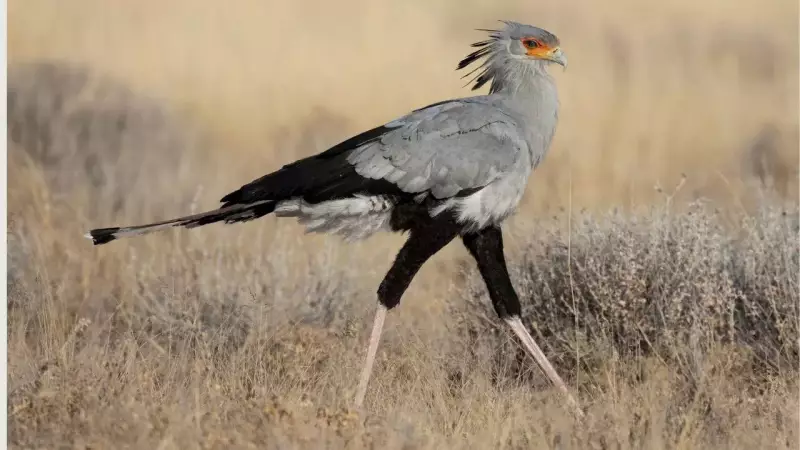
In the vast savannas of Africa, a feathered assassin stalks its prey with the precision of a martial arts master. The secretary bird, with its distinctive crane-like legs and eagle-like body, has been revealed as one of nature's most efficient killers - and scientists are completely rethinking evolutionary biology because of it.
The Ultimate Predatory Weapon
Recent groundbreaking research has uncovered that this remarkable bird delivers kicks with such incredible force that it can generate impacts equivalent to five times its own body weight in just 15 milliseconds. To put this in perspective, that's like a human generating enough force to crush a skull with a single kick.
"What we're witnessing is evolutionary engineering at its finest," explains Dr. Steve Portugal, lead researcher of the study. "The secretary bird has developed a hunting technique so specialized, so brutally efficient, that it's forcing us to reconsider how we understand predator evolution."
Science Meets Martial Arts
Using high-speed cameras and force plate technology, researchers captured the bird's hunting technique in unprecedented detail. What they discovered was nothing short of astonishing:
- Lightning-fast strikes completed in 15 milliseconds - faster than the human eye can follow
- Precision targeting that can accurately hit a snake's head multiple times per second
- Shock-absorbing adaptations in the legs that prevent self-injury from the tremendous impact forces
- Energy transfer efficiency that rivals engineered mechanical systems
Rewriting the Textbooks
This discovery is challenging fundamental assumptions in evolutionary science. Previously, scientists believed that such specialized hunting techniques would require significant skeletal modifications. However, the secretary bird achieves its deadly efficiency using essentially the same bone structure as other birds.
The real revolution lies in how the bird uses its existing anatomy. Through millions of years of evolution, it has perfected a technique that maximizes force while minimizing energy expenditure and self-injury risk.
Beyond the African Plains
The implications of this research extend far beyond understanding a single species. Scientists are now re-examining other predators through this new lens, asking what other evolutionary adaptations we might have missed because they weren't where we expected to find them.
This research demonstrates that sometimes, the most revolutionary adaptations aren't in the structure itself, but in how that structure is used. The secretary bird's killer kick isn't just fascinating animal behavior - it's a living lesson in evolutionary innovation that's changing how scientists understand the very process of adaptation.
As research continues, one thing is clear: nature still has plenty of surprises left, and the humble secretary bird has just delivered one of the most impactful kicks in scientific history.





